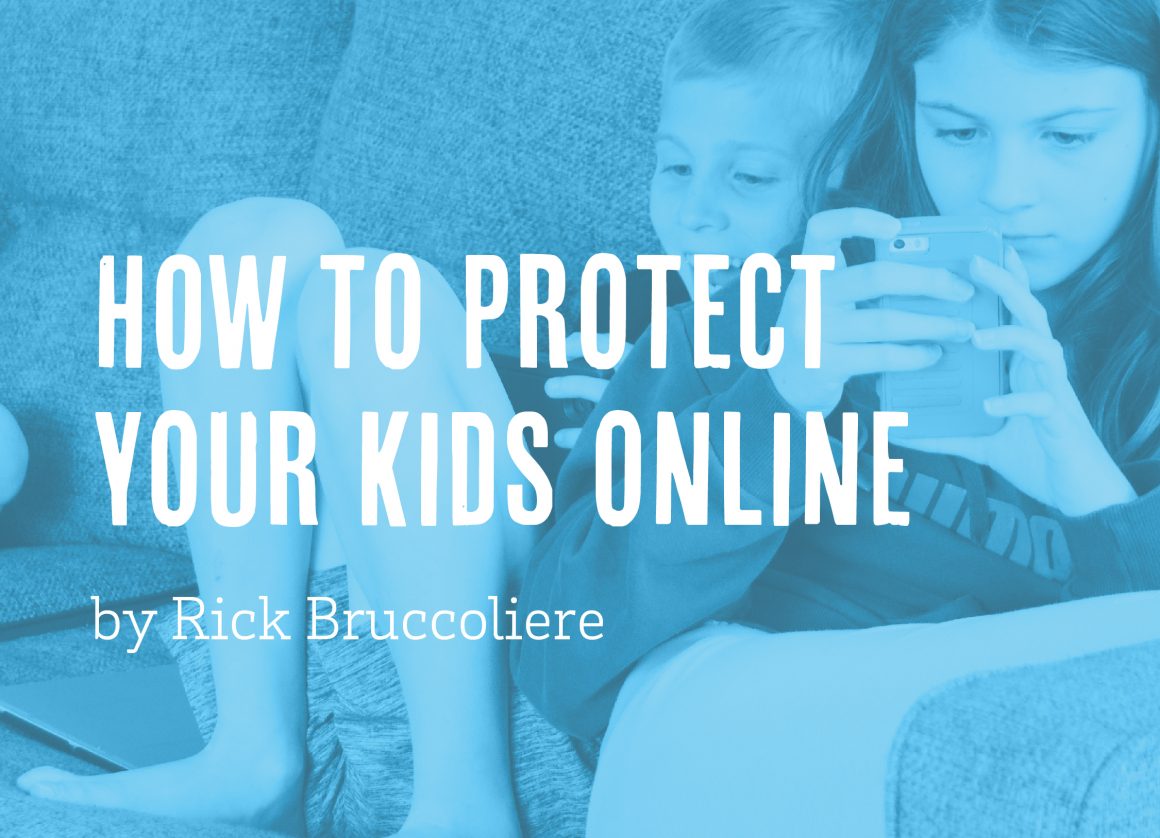On Sundays, I serve on the Park Church cleanup team and assist the audio/visual team with service presentation slides. My day job is that of a law enforcement officer specifically focused on computer forensics and online child exploitation investigations for more than 14 years. In addition, I supervise and manage a countywide team of investigators who are members of the Internet Crimes Against Children Task Force.
While there is much value to be gained from the internet and technology in general making everyday life a bit easier, it has also made us susceptible to a variety of crimes, such as scams and frauds, computer intrusions and account takeovers, and the exploitation of our children.
Over many years, I have seen a number of ways our children have been exploited online. No matter the method, it is the goal of online predators to manipulate, gain trust and confidence (grooming techniques) to desensitize and lower inhibitions of our children. I know it may be difficult to hear or even comprehend something so vile as such predatory behavior. All the more reason to do what we need to do to protect the innocence of our children.
Unfortunately, the online world has not been designed with child safety in mind. According to Bark’s 2022 Annual Report, a parental control monitor company, they found that 62.4% of tweens and 82.2% of teens encountered sexual content while online, and 9.4% of tweens and 14.2% of teens encountered predatory behavior from someone online. Furthermore, according to research from Thorn, an international anti-human trafficking organization, they report that 4 in 5 minors interact with unfamiliar adults online. The problem with the online space is that it isn’t regulated the same way the “real world” is. So, what can we do to protect our children while online?
Set Ground Rules
My first recommendation is to have a meaningful conversation with your children. If you are introducing your child to electronic devices (computers and smartphones), then set the ground rules early. Be mindful that it helps to speak to your kids in an age-appropriate way concerning online dangers. Speak with them about your expectations on how they are to use such electronic devices; essentially, the do and don’ts:
Do’s
- Do be kind and respectful to everyone while online
- Do think twice before posting comments or content
- Do keep your future in mind in terms of school and employment
- Do be open and honest with your parents/guardians and report uncomfortable online experiences
- Do report inappropriate behavior to the electronic service provider
- Do seek help from law enforcement if needed
- Do keep evidence of the crime
Don’ts
- Don’t accept friends request from strangers
- Don’t share personal information or content online
- Don’t share account passwords
- Don’t keep secrets from your parents/guardians
- Don’t stay online if you see inappropriate content
- Don’t comply with online demands
- Don’t meet someone in person that you met online
Make a Contract
To reinforce these expectations, develop a written contract with your children. This way, the rules have been codified for their reference. Your contract can include the do’s and don’ts as well as any consequences for such violations. Moreover, you can direct their attention to the contract when your child violates a rule so he/she will know what to expect when such violations occur. Tip: The more regular the conversations we have with our children, the more normal and conversational these check-ins will become, and the more comfortable your children will be speaking with you. Here’s a sample contract.
Educate Yourself
Take the time to understand the technology associated with the electronic device(s) and Apps. It’s our job as parents to arm ourselves with the information and knowledge about technology to protect our children. By knowing the capabilities of devices and Apps, then you can better understand how to set up protections through the built-in security features associated with them. As an example, there are many social media apps that allow for real-time tracking of its users by other users. One of the more popular ones is Snapchat. By knowing the features and capabilities of the Apps used by our children, then you will discover that such features and other capabilities can be turned off and/or disabled. You can setup parental controls through the App stores (Apple App Store/iTunes and Google Play), to block or grant permission for App downloads.
In terms of the electronic devices used by our children, they, too, can be configured to better protect our children. Such configurations can include setting up content and privacy restrictions, as well as built-in security features.
I have included the below information to help get you started; however, this is not everything there is to know. As I previously mentioned, we need to inform ourselves through research on how to set up the various protections associated with the Apps and electronic devices. The good news is that there is a lot of information for us to find online, which often includes the device manufactures and App developers’ websites. Tip: When in doubt — Google it out!
Parental Controls
- Apple Parental Controls
- Samsung Galaxy Parental Controls
- Google Play Parental Controls
- Google Family Link Getting Started
- Google Family Link: Family Safety & Parental Control Tools
Use Common Areas
Ensure that your child’s online activities and use of their electronic devices are occurring within the common areas of your household — family presence — and not in private areas, such as their bedrooms or bathrooms. This is not to say that this will always be the standard for your child. As with the normal course of parenting, our goal is to educate and guide our children by establishing expectations for their preferred behavior. With continued reinforcement, our long-term goal is to develop their appropriate use of electronic devices and online behavior. As your children develop the expected level of maturity and proper online behavior, allow them to use their devices with small incremental amounts of privacy until you are comfortable with granting them full use of their device(s).
Set Time Limits
Set time limits on your child’s online activities. The purpose of time limits is to develop a balance between online and offline activities. Excessive online use can have an adverse effect on a child’s development of social and emotional intelligence. As humans, when we have face-to-face communications with one another, we learn skills that teach us what is appropriate or inappropriate within conversational interaction. Human to human interactions also allow us to develop our ability to “read the room” — the environment in which we are interacting. Unfortunately, the virtual world does not allow for the same kind of social and emotional learning through online interactions; it creates a disconnect between humans. There is no substitute for real-life relationships in helping our children develop social and emotional intelligence.
Moreover, setting time limits can also help reduce internet addiction. Internet Addiction Disorder (IAD) is a behavior addiction that can cause neurological complications, psychological disturbances, and social problems. IAD is also known as “cyber addiction,” and refers to excessive and compulsive engagement with the online world. By helping your children develop a healthy balance between online and offline activities, it will help them avoid the hazards of online obsession.
Store It
Keep your child’s device in your possession when it’s not being used. This is especially important when first introducing an electronic device to your child. Similar to time limits, this is helpful because it can help develop a healthy balance between online and offline activities. Furthermore, it will allow you to monitor their activities/notifications which will also allow you to gauge their level of online responsibility. As previously mentioned, when your children have demonstrated an expected level of maturity and good online behavior, then allow them to use their devices in small increments until you are comfortable with granting them full use of their device(s).
Relationship Building
Cultivate the confidence in your child to come to you for advice or help in times of need. Encourage your child to report any inappropriate online conversations/requests or cyberbullying incidents. Regular conversations with your child will foster their confidence that you are there for them even if they believe that the mistake is theirs.
If any criminal activity has occurred against your child, do not delete the evidence. In fact, save the evidence and report the incident to your local law enforcement agency immediately as time is of the essence since digital evidence/data is fleeting.
Be a Role Model
Be the role model to your children and set the example for the proper use of a device and online activity. Technology’s irresistible pull draws in parents as much as it does kids. We check our phones every hour (or minute), log late hours working or surfing the internet on our laptops, binge watch our favorite shows, and even engage in dangerous actions such as distracted driving. Our children are watching us and they are very likely to replicate our behavior. They may also feel like they have to compete with devices for your attention. Set the example by limiting your own use of electronic devices and establish family time without devices to build a closer relationship with your kids.
Not all of these recommendations may be practical as your children may have already had access to their devices for a while now. It is, however, never too late to encourage proper use of devices and online behavior a/k/a “Netiquette.” In summary:
- Technology awareness by parents is paramount in safeguarding our children.
- Look for signs and symptoms of excessive internet use and seek help from a therapist or counselor if need be.
- Speak with your children often and assure them that they can come to you with any problems that may be affecting them such as someone’s inappropriate online communications or cyberbullying.
- Save evidence of a crime and report it to the appropriate law enforcement agency.
- The use of technology such as monitoring software can help to monitor online activity and set time limits. Technology, however, cannot catch everything; communication is the key to establishing healthy online behavior.
- Whatever your established house rules for technology are, as with all rules, determines what works best for your family; it is important to remember to do your best to ensure follow-through.
- Finally, children are likely to copy our behavior. As such, be the role model and set the example for the use of devices and online activity.
________
Rick Bruccoliere, a member of Park for 4+ years, serves on the cleanup team and assists the audio/visual team with service presentation slides.
________
Resources Recommended by Rick
Keeping Children Safe Online, U.S. Department of Justice:
Keeping Children Safe Online (justice.gov)
Project iGuardian, U.S. Department of Homeland Security: iGuardians™:
Combating Child Predators | ICE
Online Grooming: Examining risky encounters amid everyday digital socialization
________


